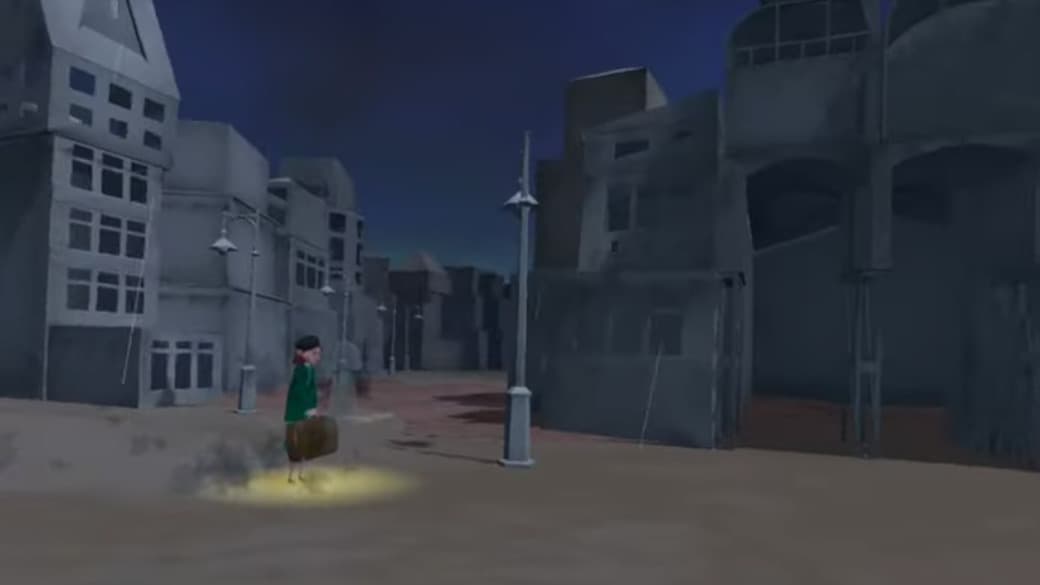
Virtual Reality Storytelling – ‘Ne Pleure Pas Devant Ma Tombe’
In the realm where advanced technology converges with the artistry of storytelling, “Do not stand at my grave and weep” stands as a testament to visionary creation under the meticulous direction of Sandra Devonssay.
Similarly, against a historical backdrop of turbulence, this VR story transcends conventional narratives, offering users an immersive storytelling experience interwoven with the timeless threads of Mary Elizabeth Frye’s poetry. In this context join us as we delve into the narrative frontiers reshaped by this profound exploration within the expansive domain of virtual and augmented reality itself.

Why: Artistic Collaboration and Creation
A testament to collaborative artistry, the project harmonizes the genius of Sandra Devonssay coupled with paper artist Charles Young. Within a meticulously crafted paper city, poetry, paper art, and new form of spatialized sound converge, inviting users into a profound exploration of the universal human connection with the departed.
In the realm of VR technology, “Do not stand at my grave and weep” emerges as a groundbreaking VR experience weaving technology and VR storytelling.
Authored by Frye in 1932, this timeless poem guides a poignant virtual journey crafted by Sandra Devonssay. To elaborate, the project’s core focus lies in meticulous craftsmanship, intertwining poetry, paper art, and spatialized sound for an unparalleled VR narrative.

The deliberate selection of Frye’s poem underscores the project’s aim—to mine stories that create a universally resonant exploration of mourning and the human experience.
Furthermore, collaborative efforts and sound design reflect a commitment to crafting an engaging and emotionally resonant narrative that transcends traditional storytelling.
How: Narrative and Emotional Exploration
Venturing beyond storytelling in virtual reality, this VR experience immerses users in a meticulously constructed paper city, a testament to Young’s artistry. The linear narrative that gracefully unfurls backward in space and time, from 1932 to 1906, simultaneously, as users navigate, triggering interactive elements that unveil the nuanced tapestry of human behavior and emotions in the mother-daughter relationship.
Essentially, central to the VR experience created is the transformative power of spatialized sound. As users traverse the virtual cityscape environment, carefully crafted sound design enhances emotional resonance and realism, grounding the narrative in physical world through a vivid and sensory-rich landscape.
What: Technology and User Engagement
This project transcends mere entertainment, aiming to provoke moments of deep introspection and foster a richer understanding of the human experience. Consequently, the choice of a universally themed poem rooted in mourning invites audiences to connect on a profound level, elevating the immersion in the VR world to a transformative and contemplative journey.
At the core of the project’s innovation is the interactive experience and immersive journalism it provides. Poetry, paper art, and spatialized sound converge in a 360° canvas, placing users in an omniscient position within the intricately crafted paper city. Moreover, every interaction becomes a catalyst, propelling the story forward and echoing the resonant themes of the narrative, making user feedback and audience engagement pivotal in the emotional tapestry.

In the realm of technology, it’s noteworthy that “Do not stand at my grave and weep” was recorded, mixed, and implemented in three languages—German, English, and French. Unity served as the host game-engine, and VRTonung implemented FMOD for more flexibility and better quality sound. This deliberate technological integration ensured a seamless and immersive experience, pushing the boundaries of VR storytelling.
Nevertheless, maintaining the integrity of the original work while seamlessly integrating it into the immersive fabric of the project became a nuanced dance of creative freedom and expression, inviting users into a world where the boundaries between poetry and VR story blur.
Personal Connections and Inspirations
Transporting ourselves back to 1932, we uncover the mystery behind the origins of Frye’s powerful poem. In this context, penned on a humble brown paper shopping bag, this creation was born as an empathetic response to the fears of a Jewish friend, Margaret Schwarzkopf, hesitant to return to Germany due to rising anti-Semitism and political tensions.
This poignant poem resonates with Sandra Devonssay real life, weaving personal threads into the project’s fabric. Similarly, mirroring her father’s background as a political refugee, the concept of the “dislocated body” prompts reflections on boundaries and the inherent difficulty of recollecting a presence through the symbolism of a grave.

Why: Future Outlook and Impact
The deliberate choice to explore the emotional depths of Frye’s poem in a virtual space of reality is intentional, offering users a heightened level of sense of intimacy. With this intention, this immersive platform of virtual worlds serves as a conduit for users to experience and feel the emotions embedded in the verses, creating an intimate connection with the themes of the poem.
In its transcendent narrative journey, “Do not stand at my grave and weep” invites audiences to transcend the limitations of conventional stories. Through the immersive medium and perspective of virtual reality, the project offers a poignant exploration of the many dimensions of human experience, allowing users to engage deeply with the stories and universal themes in ways traditional mediums fall short.

As “Do not stand at my grave and weep” poised for its global debut, the project not only marks a milestone but serves as a beacon for future prospects in virtual reality storytelling.
Beyond this experience, the potential for expanding narratives through the immersive medium hints at a transformative shift in how audiences perceive and engage with literature.
In summary, the legacy of this project may extend far beyond its debut, influencing the future trajectory and possibilities in the evolving landscape of the VR world, VR content, culture and human connection.
more projects